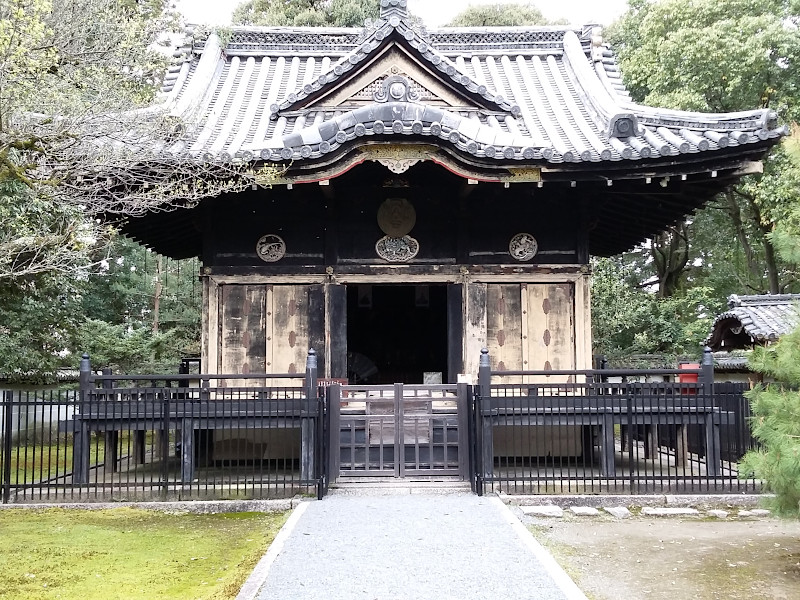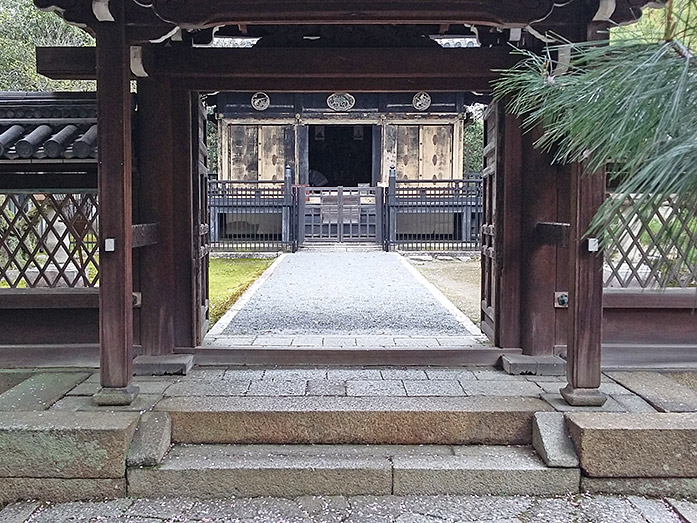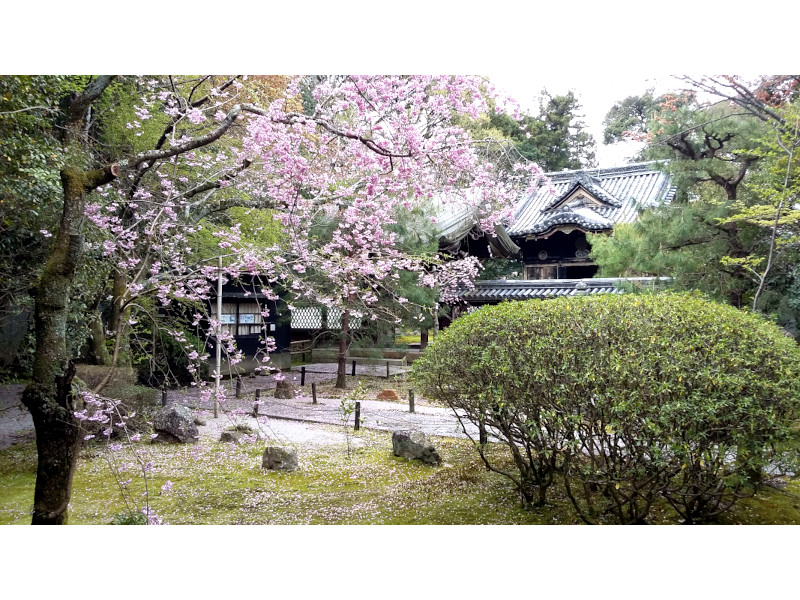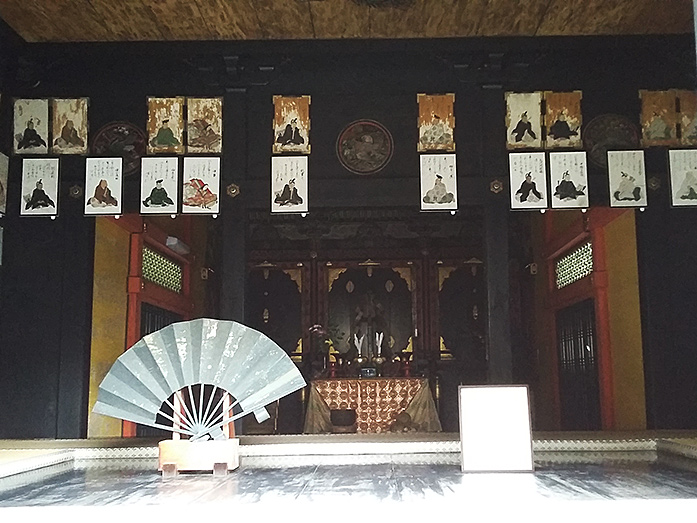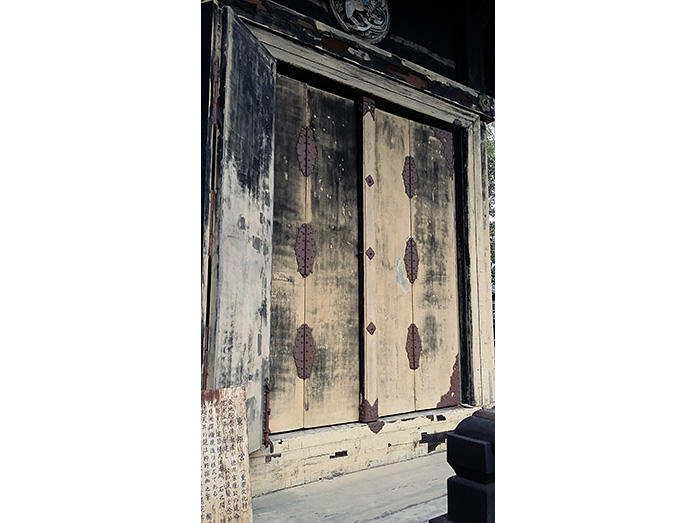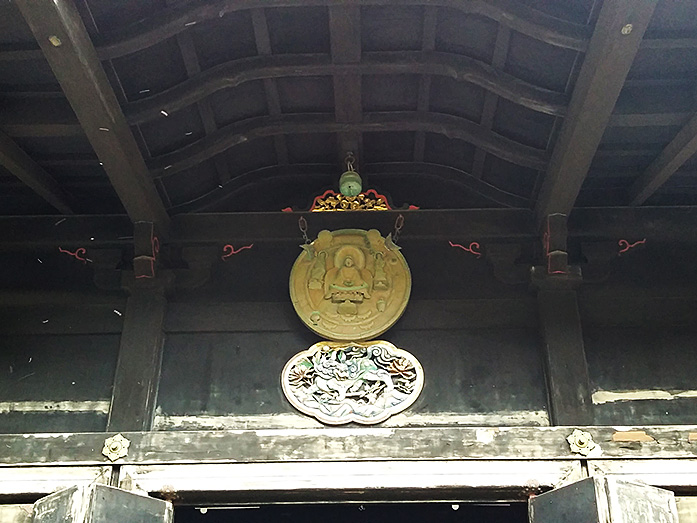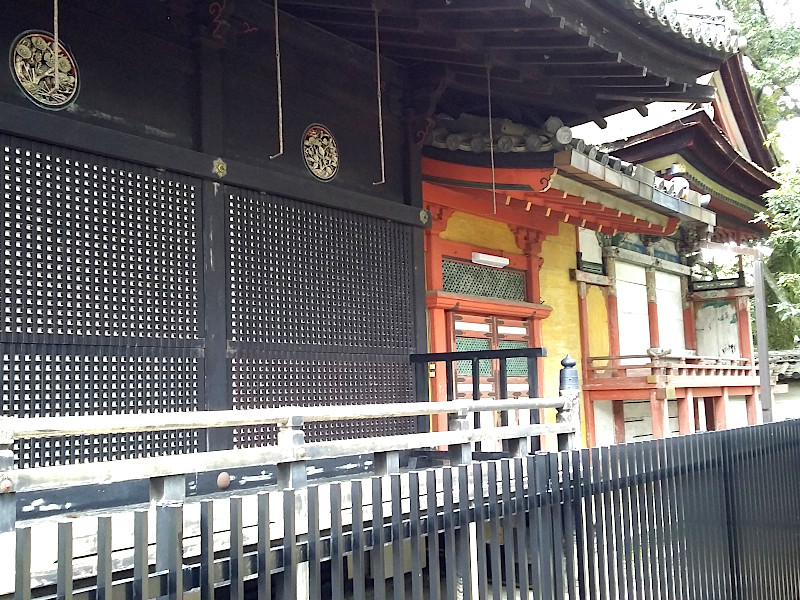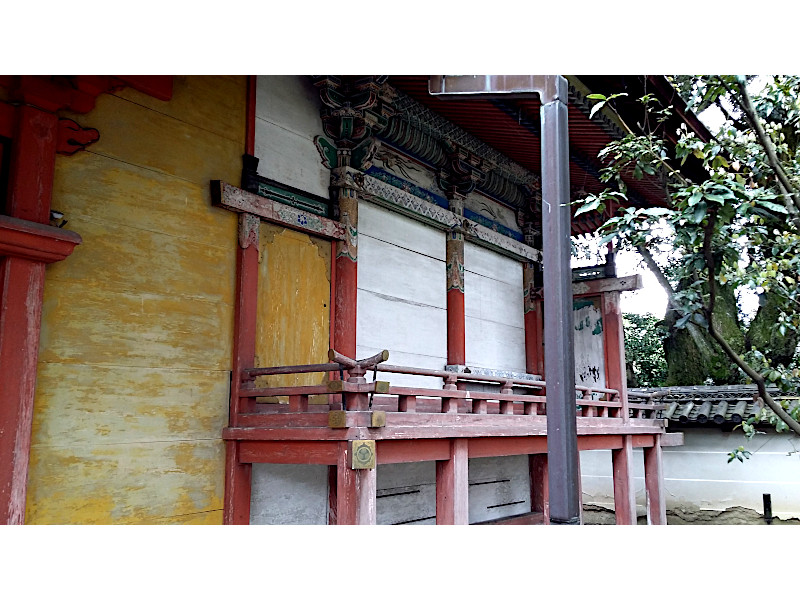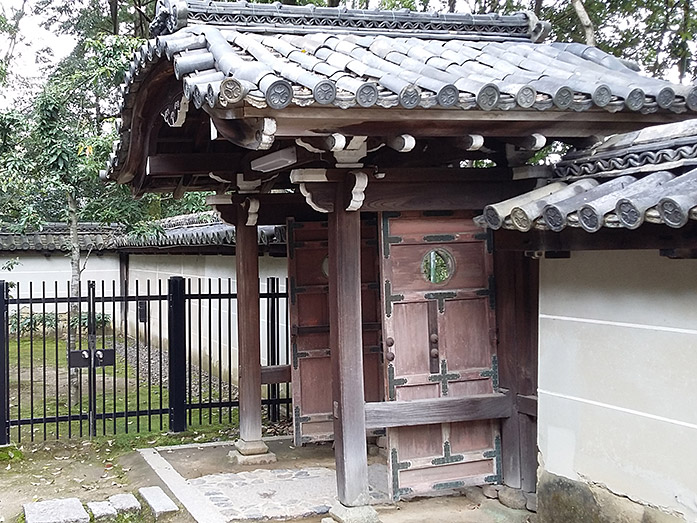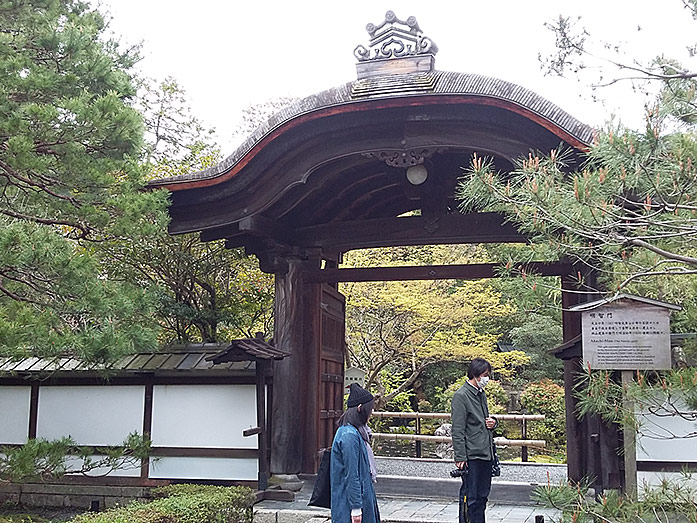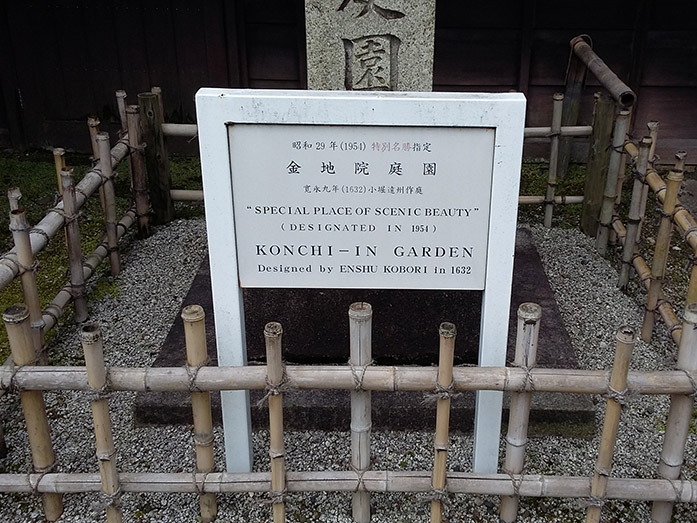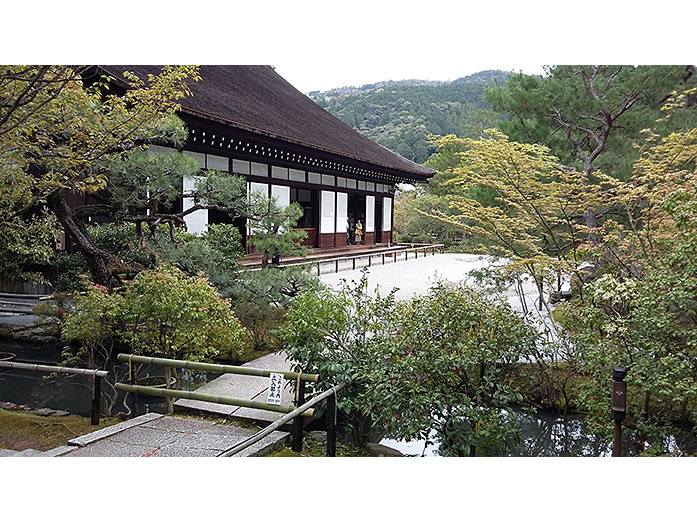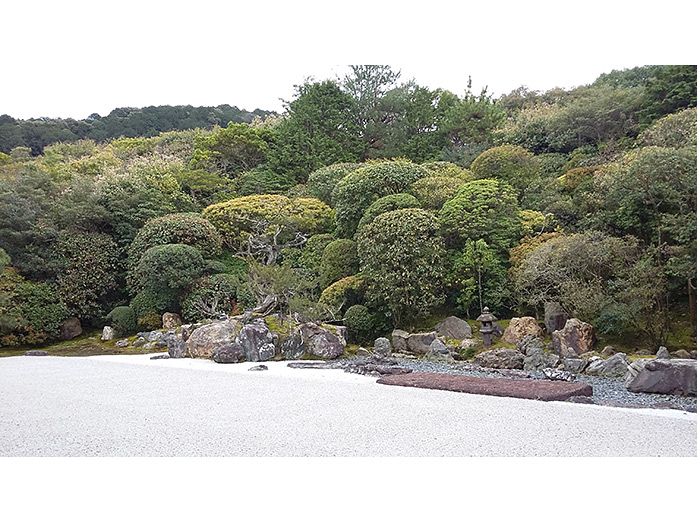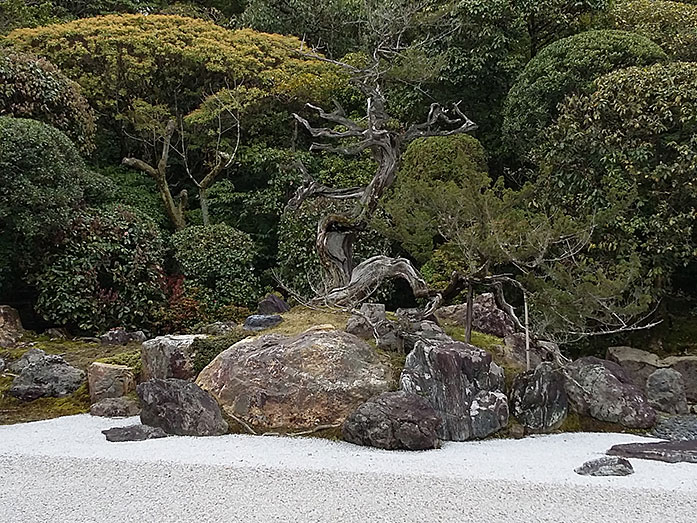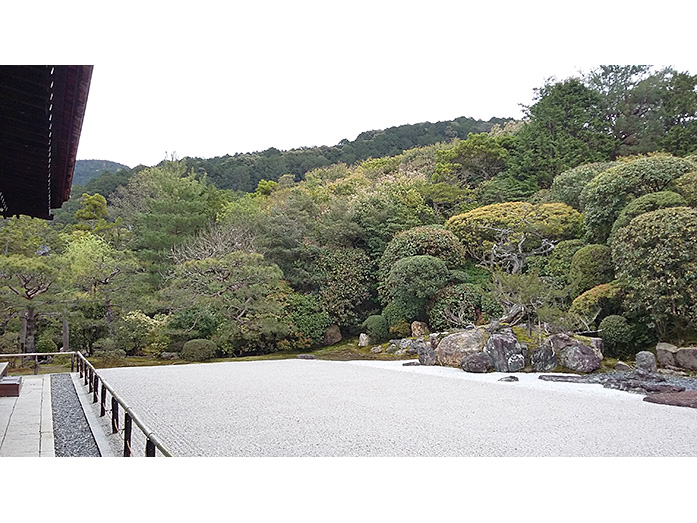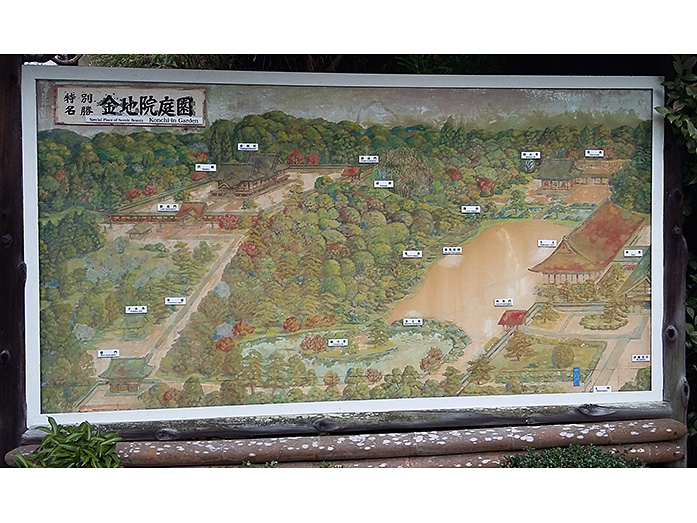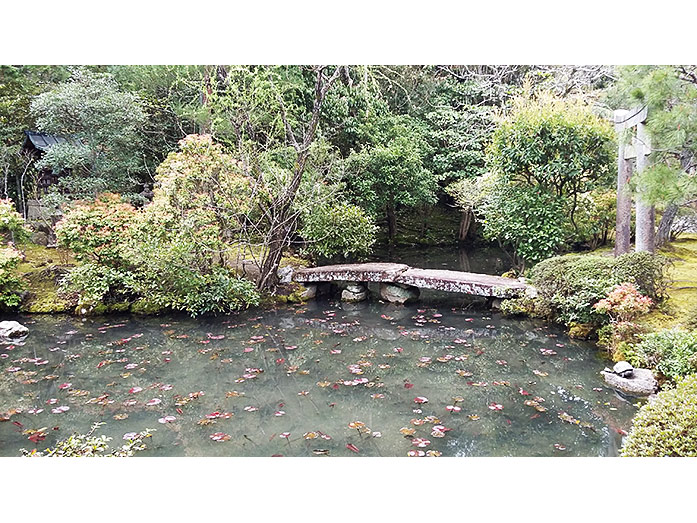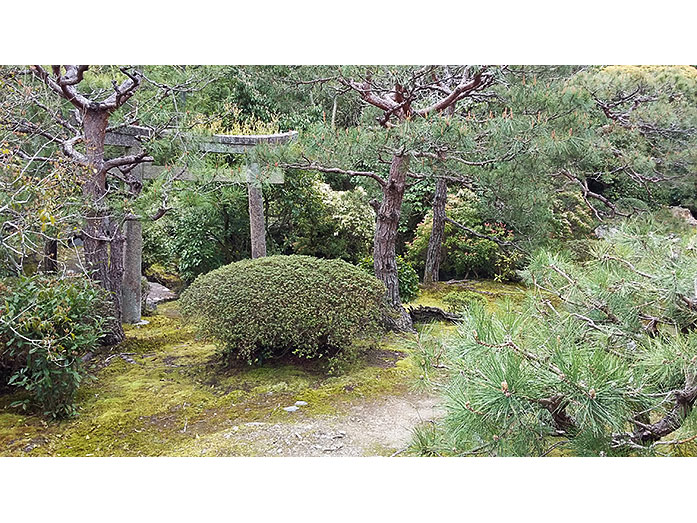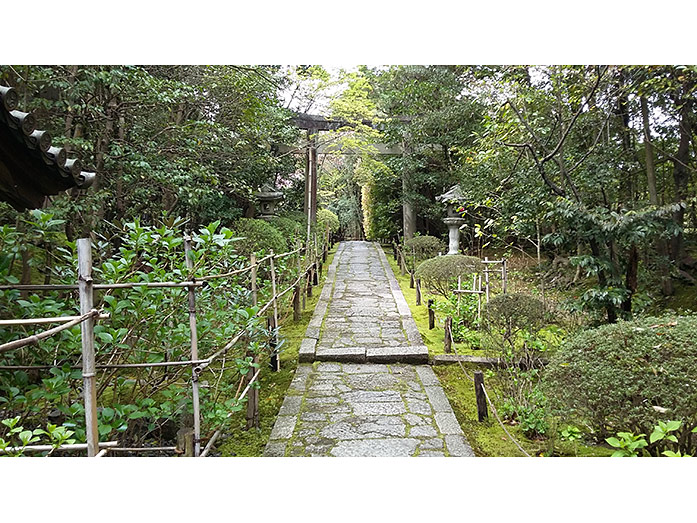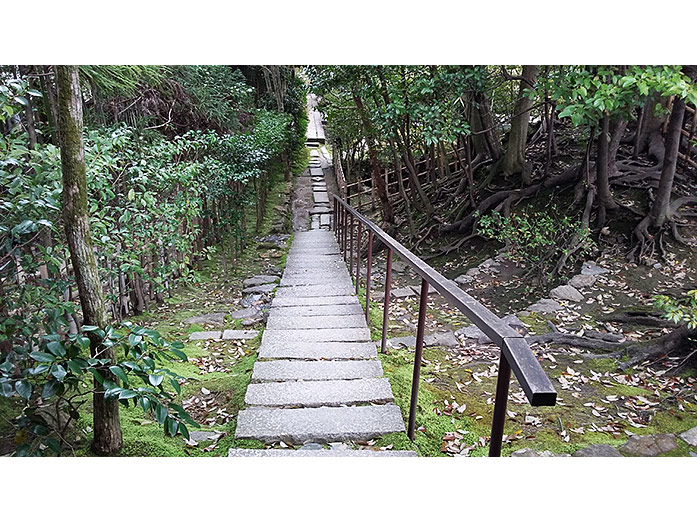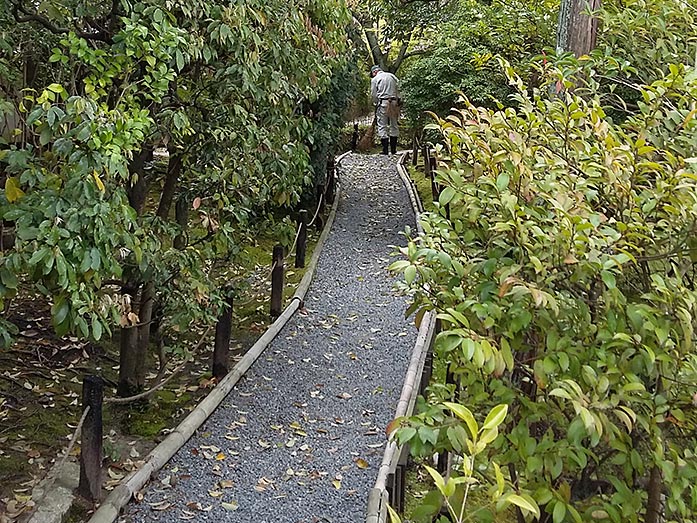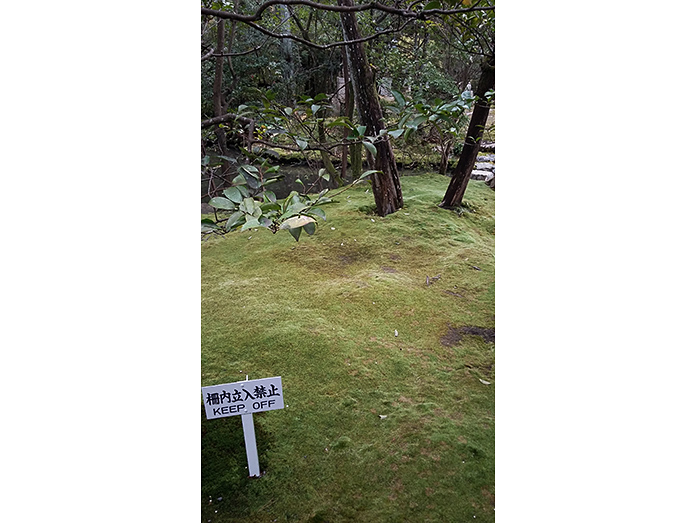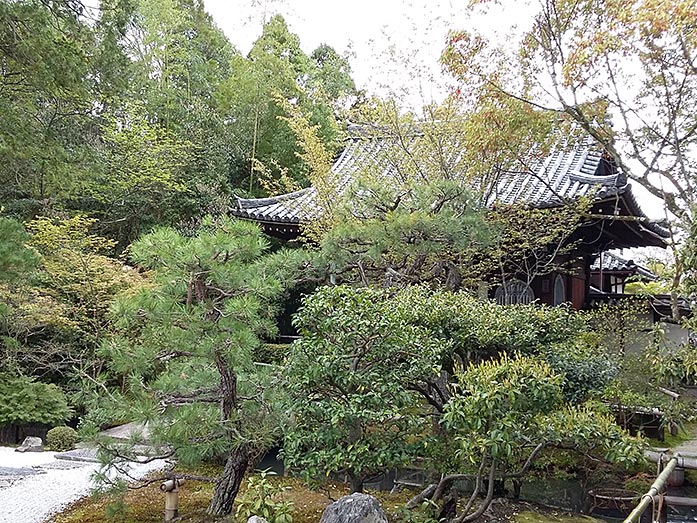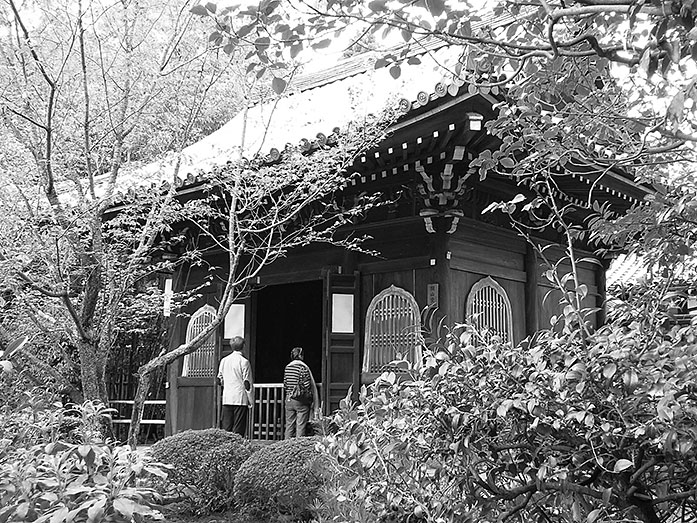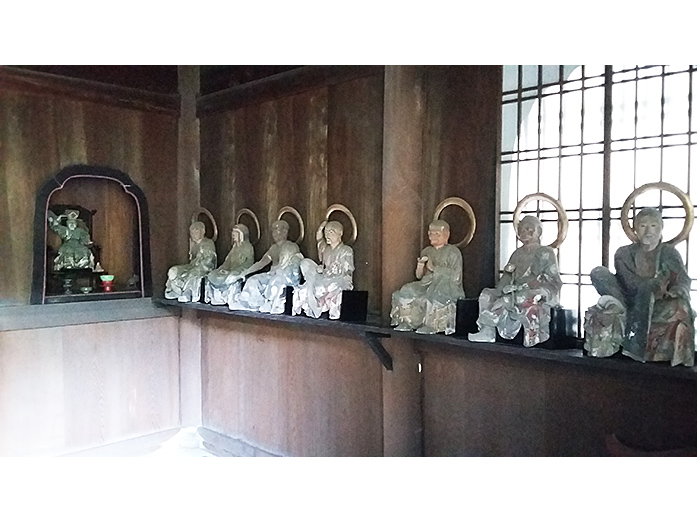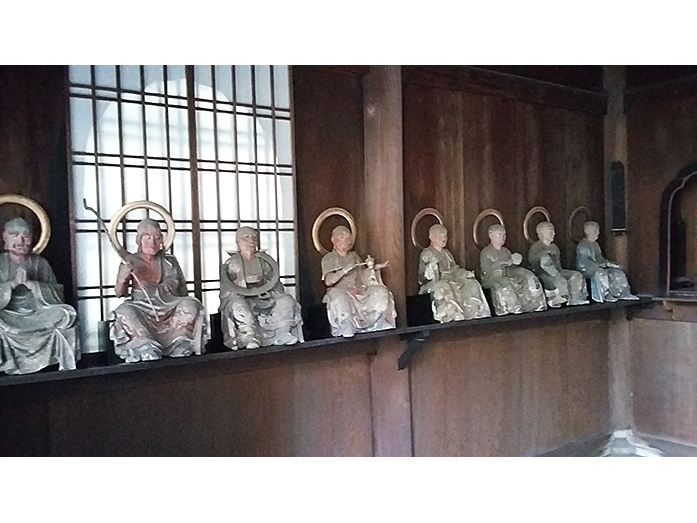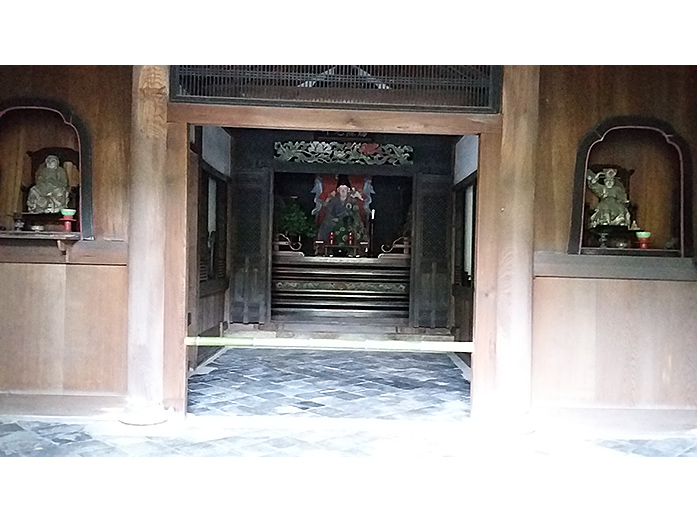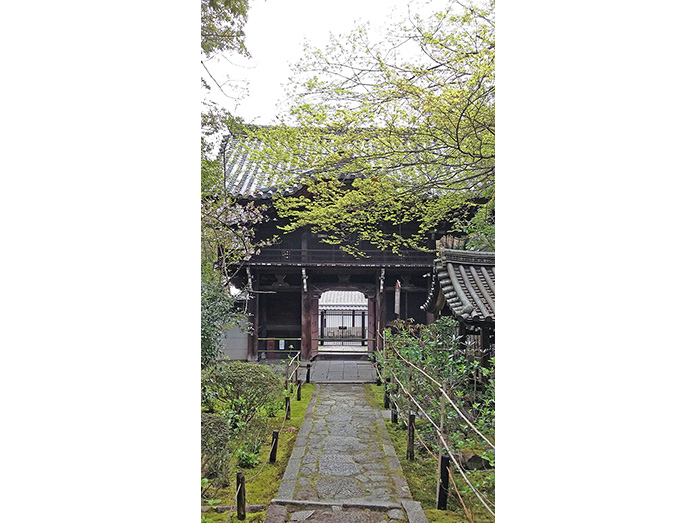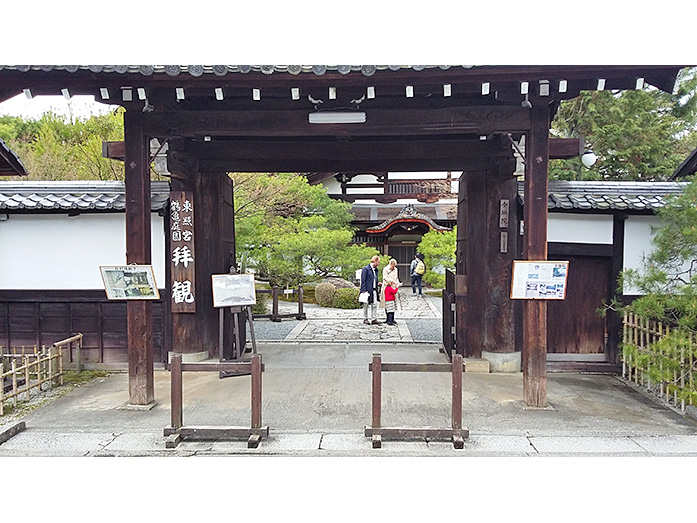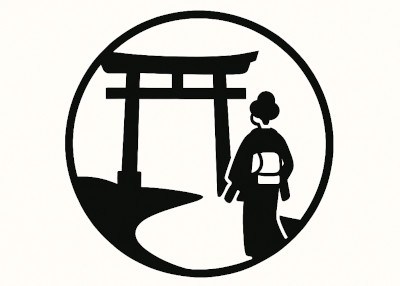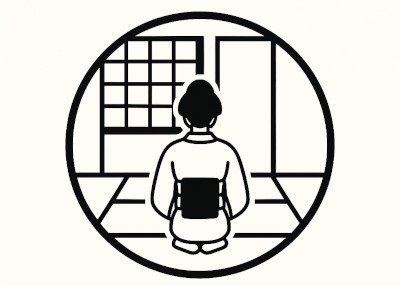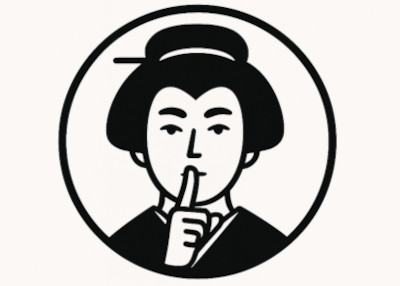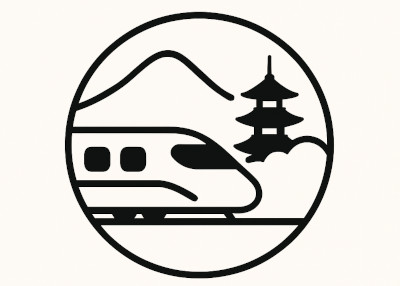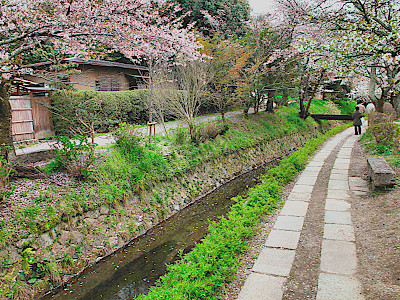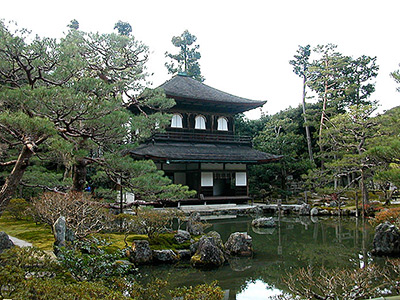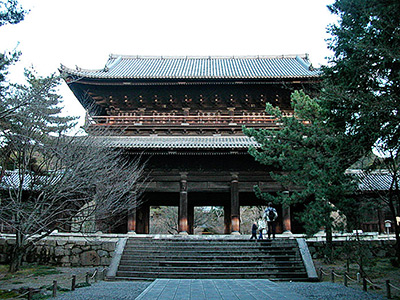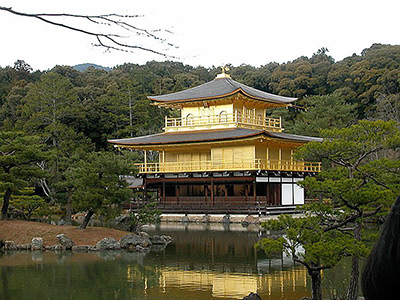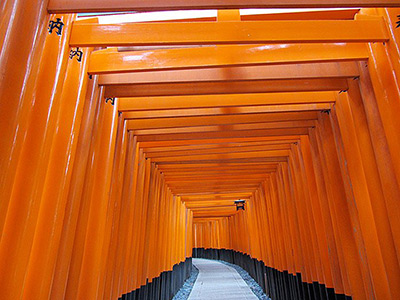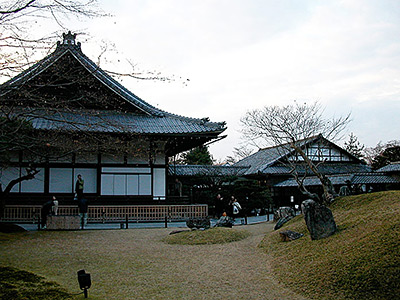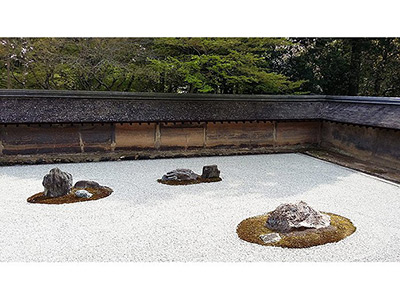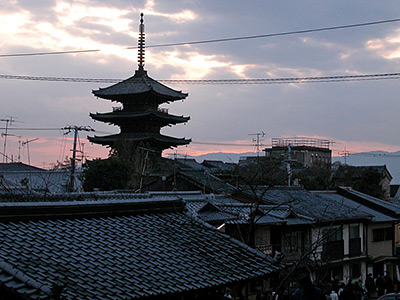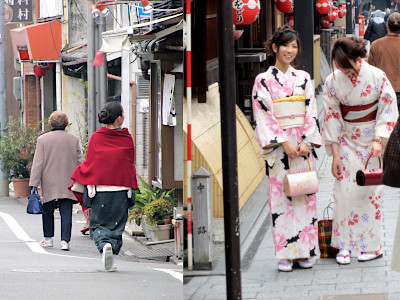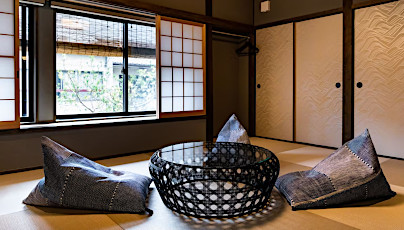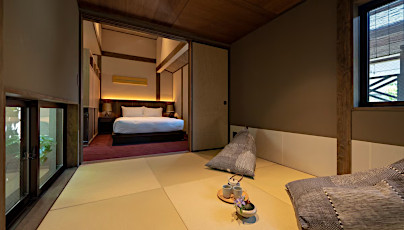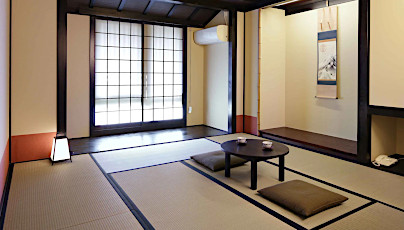Konchi-in Temple in Kyoto
This post can contain affiliate links, which means that we may receive a small commission if you make a purchase using these links.
Facts & Figures
Konchi-in is a beautiful Zen Buddhist temple (Rinzai school) within the Sakyo Ward in Kyoto. It is a sub-temple of the much larger Nanzen-ji temple complex nearby. I highly recommend you to visit there the famous Konchi-in Temple Garden dating back to the early Edo period. The dry landscape garden (Crane and Turtle Garden), one of the finest examples of shakkei (borrowed scenery), was declared as a Special Place of Scenic Beauty by the Japanese Ministry of Education, Culture, Sports, Science and Technology.
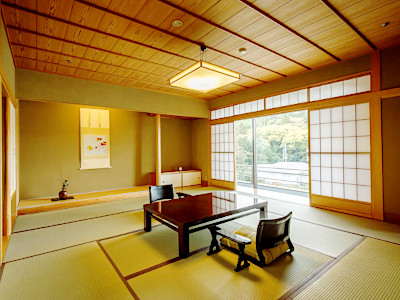 Best Places to Stay in Kyoto >
The architectural style of Toshugu Shrine, an Important Cultural Asset, at the temple grounds, is called Gongen-style. No other place or shrine in Kyoto has this style. Enjoy also the beautiful fusuma paintings (paintings on sliding doors) in the main hall by artist Kano Tanyu (1602 - 1674). By the way, the abbot's chamber (Hojo) was relocated from Fushimi Castle. Konchi-in is a very popular place for Zen practitioners and the quiet environment makes it easy to stay focused.
Best Places to Stay in Kyoto >
The architectural style of Toshugu Shrine, an Important Cultural Asset, at the temple grounds, is called Gongen-style. No other place or shrine in Kyoto has this style. Enjoy also the beautiful fusuma paintings (paintings on sliding doors) in the main hall by artist Kano Tanyu (1602 - 1674). By the way, the abbot's chamber (Hojo) was relocated from Fushimi Castle. Konchi-in is a very popular place for Zen practitioners and the quiet environment makes it easy to stay focused.
- Konchi-in Temple:
- Opening Hours - 8:30 am to 5:00 pm (March till November)
- Opening Hours - 8:30 am to 4:30 pm (December till February)
- Admission Fee - 400 yen (Adults), 300 yen (High school students), 200 yen (Junior high and elementary school students)
History
Konchi-in was established in 1400 at Takagamine in Kita Ward (northern part of Kyoto) by shogun Ashikaga Yoshimochi (1386 - 1428) and Daigo Tokuki, the 68th head priest of Nanzen-ji Temple. During the Onin War (1467 – 1477) the temple was completely destroyed, but with the support of the famous samurai Hosokawa Fujitaka (1534 - 1610), also known as Hosokawa Yusai, everything was rebuilt to its former glory. Ishin Suden, advisor to Tokugawa Ieyasu (1543 - 1616) and Zen Rinzai monk, decided to relocate the temple in 1605 to its current place. The famous Tsurukame Garden (the Crane and Turtle Garden) was created in 1632 by the tea master Kobori Enshu (1579 - 1647) for a planned visit by shogun Tokugawa Iemitsu (1604 - 1651), which unfortunately never happened. Kobori Enshu got help from two gardeners named Kentei and Murase Sasuke. Other works by Enshu can be admired at Toshogu Shrine in Nikko, Nijo Castle (Nijo-jo), Nanzen-ji’s Hojo Garden in Kyoto, and many more. In 1954 Konchi-in Garden was designated a Special Place of Scenic Beauty.
Location

Konchi-in is located within the Sakyu Ward near Philosopher´s Walk and Nanzen-ji Temple.
Address: 86-12 Nanzenji Fukuchi-cho, Sakyo-ku, Kyoto 606-8435
How to get to Konchi-in?
- 20min from Kyoto Station to Keage Subway Station by Tozai Line and
- 5min walk from Keage Subway Station to Konchi-in
Sightseeing spots
Top:
Tsurukame Garden (Crane and Turtle Garden) - You cannot find a better example of the - borrowed scenery (shakkei) - Zen garden in Kyoto. The garden is located right in front of the abbot's building. The crane is a symbol of long love, loyalty, and wishes for health. The turtle on the other hand is associated with the earth and being calm like a rock. The garden can only be viewed from the veranda of the Main Hall of the Konchi-in temple.
Toshugu Shrine - The beautiful dragon design on the ceiling was made by artist Kano Tanyu (1602 - 1674). The shrine itself is dedicated to the spirit of shogun Tokugawa Ieyasu (1543 - 1616) and was built in 1632. A hair of Tokugawa Ieyasu is enshrined here.
Hassoseki - The eight-windowed teahouse was created by Kobori Enshu (1579 - 1647) and is well-known for its three-tatami design. It is one of the three major teahouses in Kyoto.
Famous monkey painting - Hasegawa Tohaku (1539 - 1610) created this well-known painting of a monkey reaching for the reflection of the moon.
Festival & Events in Kyoto(dates can change without notice)
April
Miyako Odori (1st - 31th)
The traditional annual spring dance of the Kyoto district Gion Kobu performed by Geiko and Maiko is a must-see on your Kyoto visit. Don't miss the most popular dances the Miyako Odori "Cherry Blossom Dances" or "Dances of the Old Capital" at the Gion Kobu Kaburenjo Theater (located close to Gion Corner).
May
Aoi Matsuri (15th)
The highlight of this festival is a large parade from the Imperial Palace through the Shimogamo Shrine and ends at the Kamigamo Shrine (Kamigamo-jinja). More than 500 people wearing aristocratic costumes from the Heian Period (794 - 1185). The Aoi Matsuri belongs with the Gion Matsuri and Jidai Matsuri as the three most famous festivals in Kyoto.
June
Aoba Matsuri (Green Leaf Festival) at Chishaku-in (15th)
The festival is an ancient ritual of followers of the Shingon sect of Buddhism, which is called Yamabushi. They participate in a series of ceremonies like celebrating the birth of founder Kobo-Daishi (744 - 835).
July
Gion Matsuri (whole month)
The month of July is full of different events like the Yoiyama - Kyoto's Magical Night (locals in kimonos look at the giant Gion floats the day before the parade) or the famous Yamaboko Junko (float procession on the 17th of July).
October
Jidai Matsuri ("Festival of Ages") (22nd)
People celebrate with a large parade between Imperial Palace to Heian Shrine the anniversary of the foundation of Kyoto. App. 2000 participants wearing historical costumes from different time periods. Enjoy this great festival which lasts around 2 hours.
Where to stay in Kyoto?
Book your Flight Tickets and Rental Car for your Japan trip
Day trips from Kyoto:
Travelers who viewed Konchi-in viewed also:
Top rated - Best Machiya Houses in Kyoto
THE MACHIYA Ebisuya, 192 Ebisuya-cho Shimogyo-ku, Kyoto 600-8062
This 3-star guesthouse got an excellent rating. All 30 individually furnished rooms offer free WiFi, air conditioning, bathrooms incl. toilets, fridges, 40-inch flat-screen TVs, and more. THE MACHIYA Ebisuya is located in central Kyoto.
View on Expedia.com
This 3-star guesthouse got an excellent rating. All 30 individually furnished rooms offer free WiFi, air conditioning, bathrooms incl. toilets, fridges, 40-inch flat-screen TVs, and more. THE MACHIYA Ebisuya is located in central Kyoto.
View on Expedia.com
The Machiya Kazahaya, 570-6 Kazahayacho, Shimogyo-ku, Kyoto, Kyoto, 600-8475
The Machiya Kazahaya offers for all guest rooms free WiFi, air conditioning, safes, bathrooms with toilets, refrigerators, and much more. Enjoy also the beautiful Japanese Garden. Guests gave this property the rating - Exceptional.
View on Expedia.com
The Machiya Kazahaya offers for all guest rooms free WiFi, air conditioning, safes, bathrooms with toilets, refrigerators, and much more. Enjoy also the beautiful Japanese Garden. Guests gave this property the rating - Exceptional.
View on Expedia.com
Kyomachiya Ryokan Sakura Urushitei, 425 Kichimonjicho, Shimogyo-ku, Kyoto, 600-8069
This beautiful 3-star guesthouse offers 32 rooms with free WiFi, air conditioning, bathrooms incl. showers and toilets, refrigerators, and much more. Enjoy also the relaxing indoor public bath (no minerals). Guests gave this property the rating - Wonderful.
View on Expedia.com
This beautiful 3-star guesthouse offers 32 rooms with free WiFi, air conditioning, bathrooms incl. showers and toilets, refrigerators, and much more. Enjoy also the relaxing indoor public bath (no minerals). Guests gave this property the rating - Wonderful.
View on Expedia.com

